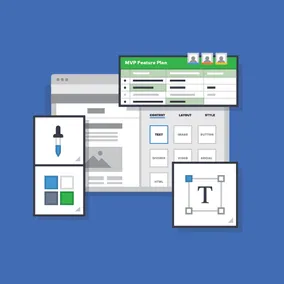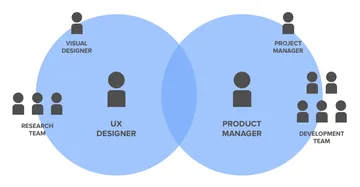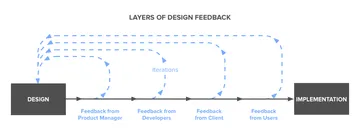How We Defined the UX-Product Management Relationship

Curt Arledge, Former Director of UX Strategy
Article Category:
Posted on
What I learned from a successful collaboration with a Product Manager.
Earlier this year, Viget embarked on a huge effort to design and build a drag & drop email editor for iContact in just three months. Although time was short, we had a large team, and our coordination was a critical part of our success.
The size and complexity of this project called for the inclusion of a Product Manager. In this article, I’ll share how effective collaboration between User Experience (UX) and Product Management made me a better UX Designer and helped our team to produce high quality work on time and on budget.
Definitions
First, I’ll clarify what I mean when I say UX and Product Management. At Viget, we’re not overly rigid about titles and roles, but this is how the responsibilities broke down for this project:
UX Responsibilities
Comparative research to understand competing products
Early concept modeling, in collaboration with Product Manager and Development
User Interface (UI) Design and Information Architecture (IA)
Prototyping for user research
Product Manager Responsibilities
Early concept modeling, in collaboration with UX and Development
Synthesizing product requirements and concepts into discrete features
Writing detailed definition docs and tickets
Identifying gaps in definition and clarifying “hand-wavey” ambiguity
Feature prioritization, development planning, and coordination
I should also mention that the Product Manager role described in this article is an agency-side role. We worked with two Product Managers on the client side as well on this project, but the distinction between these two roles is a topic for another article.
Shared Understanding, Complementary Roles
Despite all of the hype about product design “unicorns” who do everything from feature definition to visual design to QA, the truth is that there is only so much one person can do well. Working with a Product Manager gave me a close collaborator and freed up time and headspace for me to focus on research and design.
The first thing that made this collaboration work well was that the two of us were closely connected and both intimately familiar with the product from the beginning. We shared a focus on the user and business needs of the project and could speak the same language about it. While I was the keeper of Sketch and InVision, the Product Manager had access to the same files and often used snippets of my designs for documentation. I had more interaction with the Product Manager than any other team member. We had constant communication and stayed in sync on the details about design changes and the latest client feedback.

Although we stayed in sync, we also had our own spheres of concerns, conversations, and stakeholders. For example, I spent about 25% of my time working with our internal research team to plan, moderate, and analyze user tests one day a week for eight weeks. There’s no way I would have had time to lead a research effort while also hashing out feature priority with the client and writing documentation and tickets. As it was, we were able to collect user feedback continuously and loop it directly back into the design.
On the other side, the Product Manager was able to act as “UX middleware” for communicating with developers, translating user needs and designs into tickets, and allocating those tasks to the right developers. On a project like iContact, with a half-dozen developers just on the Viget side, this was nearly a full-time job. (Indeed, in the past, Viget has alternatively labeled the Product Manager role as a Development Manager).
The First Layer of Design Feedback
Working with a Product Manager streamlined the design process by providing an early and lightweight layer of design feedback. I was able to generate ideas quickly, give them shape in visual form, and share them (often in an unfinished state) with the Product Manager while the cost of change was still very low. From his position closer to the implementation side of things, the Product Manager was in a good place to scrutinize designs for technical complexity, logical consistency, and practical feasibility before developers were asked to weigh in.

One of the hardest things for a UX Designer to do is envision the “ideal final state” of a feature while also considering its “MVP state,” the simplest first version we can ship. Working with a Product Manager eases this tension. The UX Designer is free to focus on the best possible solution for users without self-censoring ideas too much for the sake of technical simplicity.
As the owner of product definition and ticketing, the Product Manager plays a role in translating “ideal final state” designs into “MVP state” definition. In practice, this translation is a collaborative negotiation between UX and Product. The complementary perspectives of the two roles helps to arrive at a suitable “simplementation” that preserves the original design intent and notes the enhancements needed to get there eventually.
What this comes down to is the Product Manager’s emphasis on prioritization. Of course everyone wants Feature A to have all the bells, whistles, and polish. It’s the Product Manager’s job to understand the broader perspective and decide whether that polish is worth more than simple working versions of both Feature A and Feature B.
Conclusion
The UX-Product collaboration style worked well for a large, complex project like iContact, but other types of projects call for a different mix of responsibilities. At Viget, we’re more concerned with empowering the right people to do the right things than we are with adhering to strict job descriptions. In any case, for this particular project, we feel that we hit a sweet spot that streamlined our process and allowed our team to do their best work.